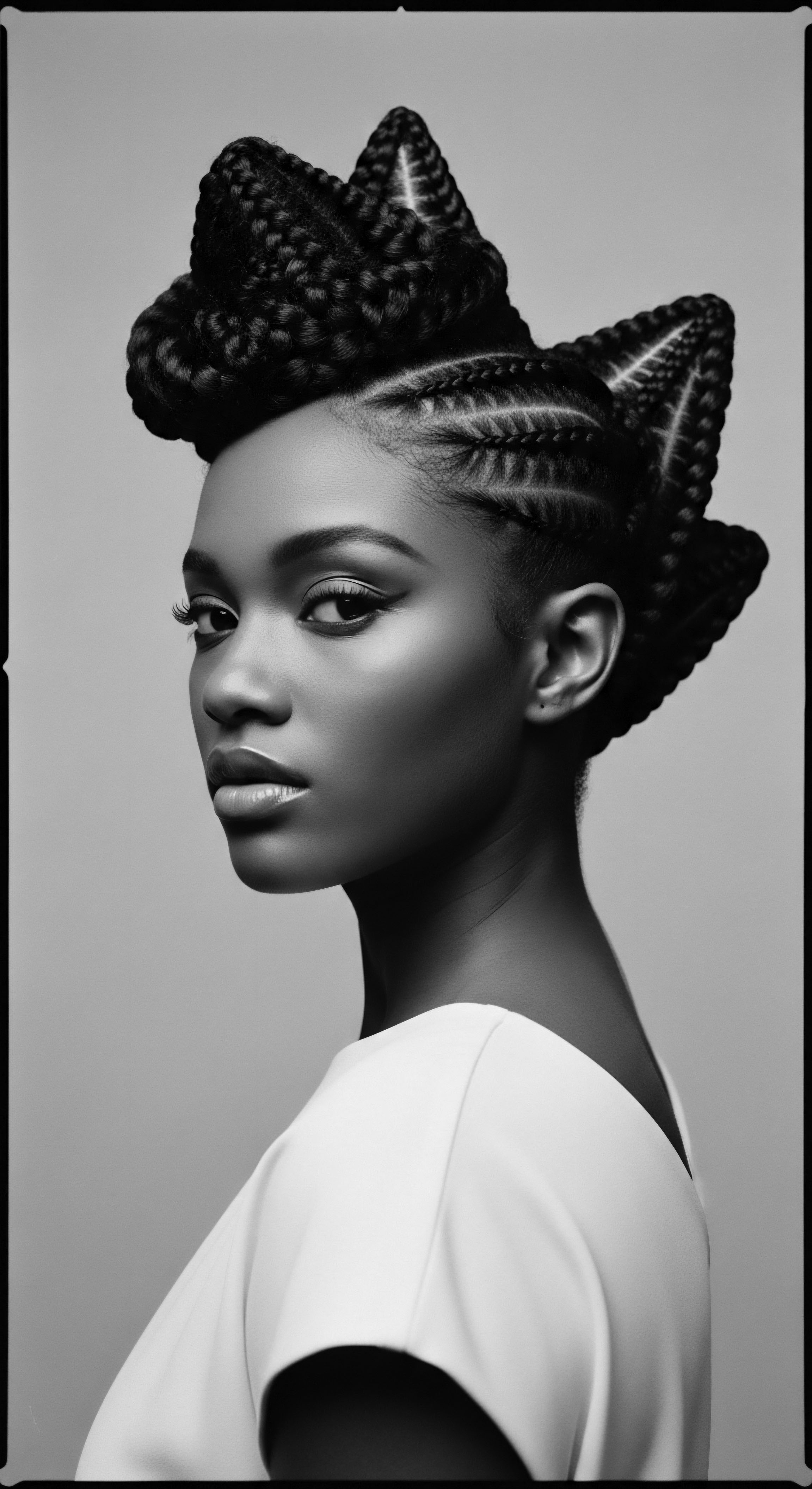
Fundamentals
Within the intricate architecture of a single strand of hair, particularly those with the profound spirals and gentle bends characteristic of textured hair, lies a fundamental component known as Ceramide Hair. This term, in its simplest sense, points to the presence and role of ceramides, which are a class of lipids, or fatty molecules, naturally residing within the hair fiber. These lipids function as a kind of cellular mortar, binding together the outermost protective layers of the hair shaft, known as the cuticle. Picture the cuticle as a series of overlapping scales, much like shingles on a roof.
Ceramides serve as the vital adhesive, ensuring these scales lie flat and remain sealed. This structural integrity is paramount for retaining moisture, imparting strength, and safeguarding the hair from environmental stressors and daily handling.
The understanding of Ceramide Hair begins with acknowledging its elemental composition. Hair, beyond its visible form, is a complex biological material, primarily composed of proteins, notably keratin, alongside a smaller but no less significant percentage of lipids. Among these lipids, ceramides stand as key players, contributing to the hair’s inherent barrier function.
This barrier acts as a shield, preventing excessive water loss from the hair’s core and repelling external damaging agents. Without a robust ceramide presence, the hair’s cuticle layers can lift, creating gaps that allow precious moisture to escape and rendering the strand vulnerable to breakage, dryness, and a dull appearance.
Ceramide Hair refers to the hair’s natural reliance on ceramides, a class of lipids, to maintain its structural integrity, moisture balance, and protective barrier, particularly significant for textured hair types.
For textured hair, which often possesses a more open cuticle structure and a tendency towards dryness, the meaning of Ceramide Hair extends beyond mere biological definition. It becomes a recognition of an inherent vulnerability and a guiding principle for care. The unique helical shape of textured strands means that natural oils, which contribute to the hair’s lipid layer, do not travel down the hair shaft as readily as they do on straight hair. This can result in a more exposed cuticle and a greater propensity for moisture depletion, making the integrity provided by ceramides even more critical.
Our historical memory holds countless generations of ancestral wisdom dedicated to preserving hair’s vitality. Though the term “ceramide” is a modern scientific designation, the practices of our foremothers intuitively addressed the needs that ceramides fulfill. Applying rich plant oils and butters, engaging in gentle detangling, and adopting protective styles were all ways to honor the hair’s delicate structure and maintain its intrinsic moisture, unknowingly supporting the very lipid barrier that ceramides help to form. These practices represent a living heritage, a testament to the deep, intuitive knowledge passed down through time, long before microscopes revealed the cellular intricacies of the hair strand.

The Hair’s Protective Sheath
The outermost layer of the hair, the cuticle, serves as the first line of defense. It is comprised of multiple layers of flattened, overlapping cells. Between these cells, a lipid-rich intercellular cement exists, with ceramides being a primary constituent.
This cement acts as a cohesive agent, ensuring the cuticle scales lie smoothly against one another. When this cement is compromised, whether through environmental exposure, chemical treatments, or daily manipulation, the cuticle scales can lift, leading to increased porosity and a rougher texture.
The significance of ceramides for hair health becomes apparent when considering the effects of their depletion. Hair lacking sufficient ceramides often displays signs of damage ❉ it may feel rough to the touch, appear brittle, and struggle to retain moisture. This is especially pertinent for textured hair, which, due to its structural characteristics, can be more susceptible to mechanical damage and moisture loss.
- Cuticle Integrity ❉ Ceramides ensure the hair’s outer layer remains sealed, guarding against damage.
- Moisture Retention ❉ They prevent water from evaporating from the hair shaft, preserving hydration.
- Enhanced Strength ❉ A strong cuticle layer, supported by ceramides, reduces breakage and increases resilience.
- Improved Appearance ❉ Hair with intact ceramides often appears smoother, shinier, and more supple.
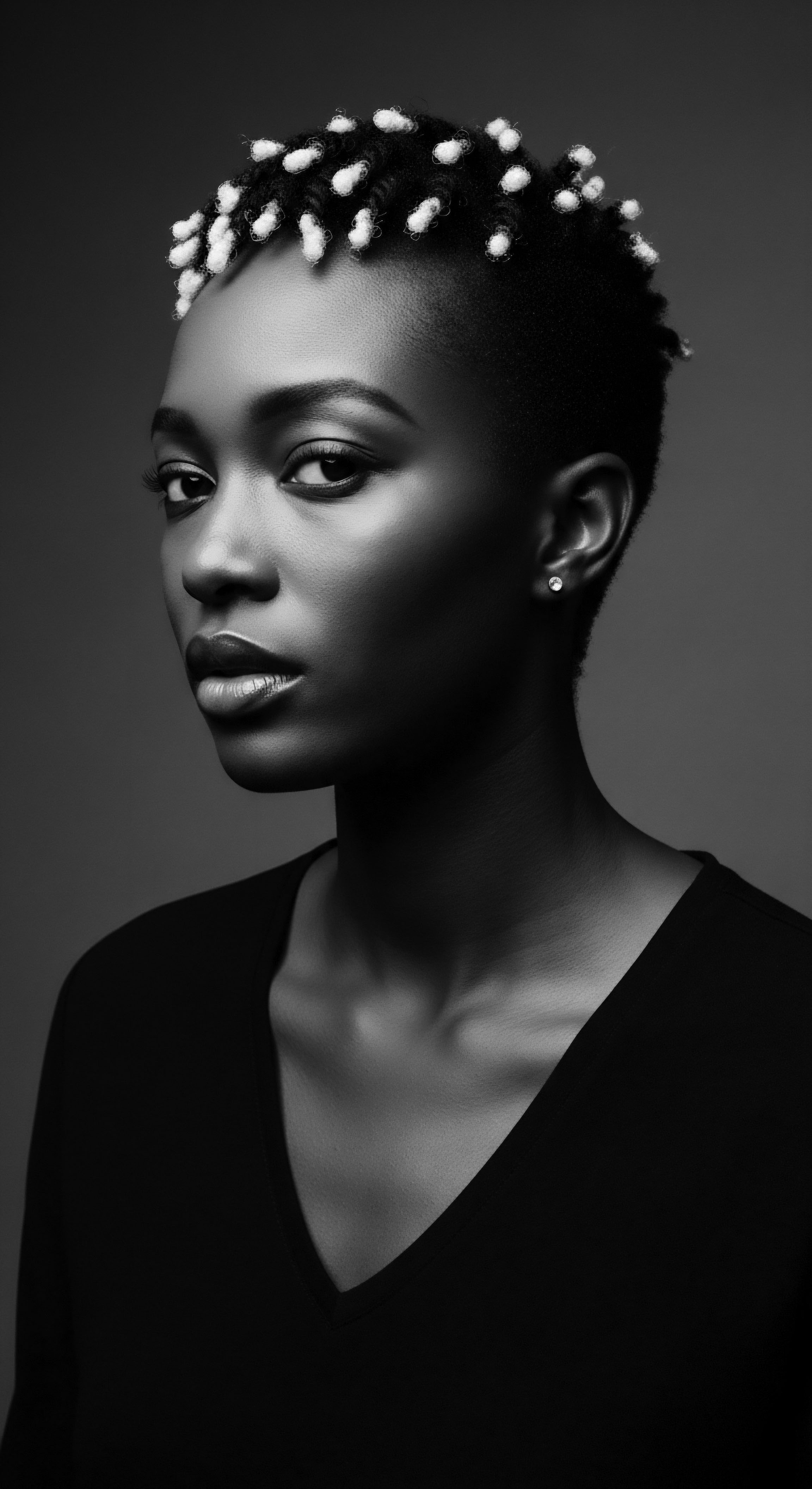
Intermediate
Moving beyond the foundational understanding, the intermediate meaning of Ceramide Hair delves into its biological function and its heightened importance for hair with pronounced curl patterns. Ceramides are not merely external agents; they are endogenous lipids, meaning they are naturally produced within the hair follicle and integrated into the hair shaft as it grows. They are a critical component of the cell membrane complex (CMC) located between the cuticle cells and, to a lesser extent, within the cortex. This intercellular lipid matrix is responsible for much of the hair’s mechanical strength, elasticity, and ability to resist environmental assaults.
The hair’s lipid profile, which includes ceramides, cholesterol, and fatty acids, plays a pivotal role in its overall condition. This complex lipid mixture forms a hydrophobic barrier, meaning it repels water, thereby regulating the hair’s moisture content. When this lipid barrier is compromised, the hair becomes more hydrophilic, absorbing and losing water rapidly, leading to issues such as frizz, dryness, and heightened susceptibility to damage. For textured hair, which often has a naturally higher porosity due to its structural characteristics, maintaining this lipid barrier is a continuous and vital act of care.
Ceramide Hair represents the crucial biological role of these lipids in maintaining the hair’s natural barrier, a function particularly susceptible to disruption in textured hair due to its unique structural attributes.
The legacy of hair care in Black and mixed-race communities often involved a deep understanding of natural emollients and occlusives, long before the scientific classification of lipids. Generations applied plant-based oils and butters, intuitively recognizing their ability to seal moisture and protect the hair. These ancestral practices, passed down through oral traditions and hands-on teaching, implicitly supported the hair’s ceramide-dependent barrier function, offering a profound connection between ancient wisdom and modern scientific insight.
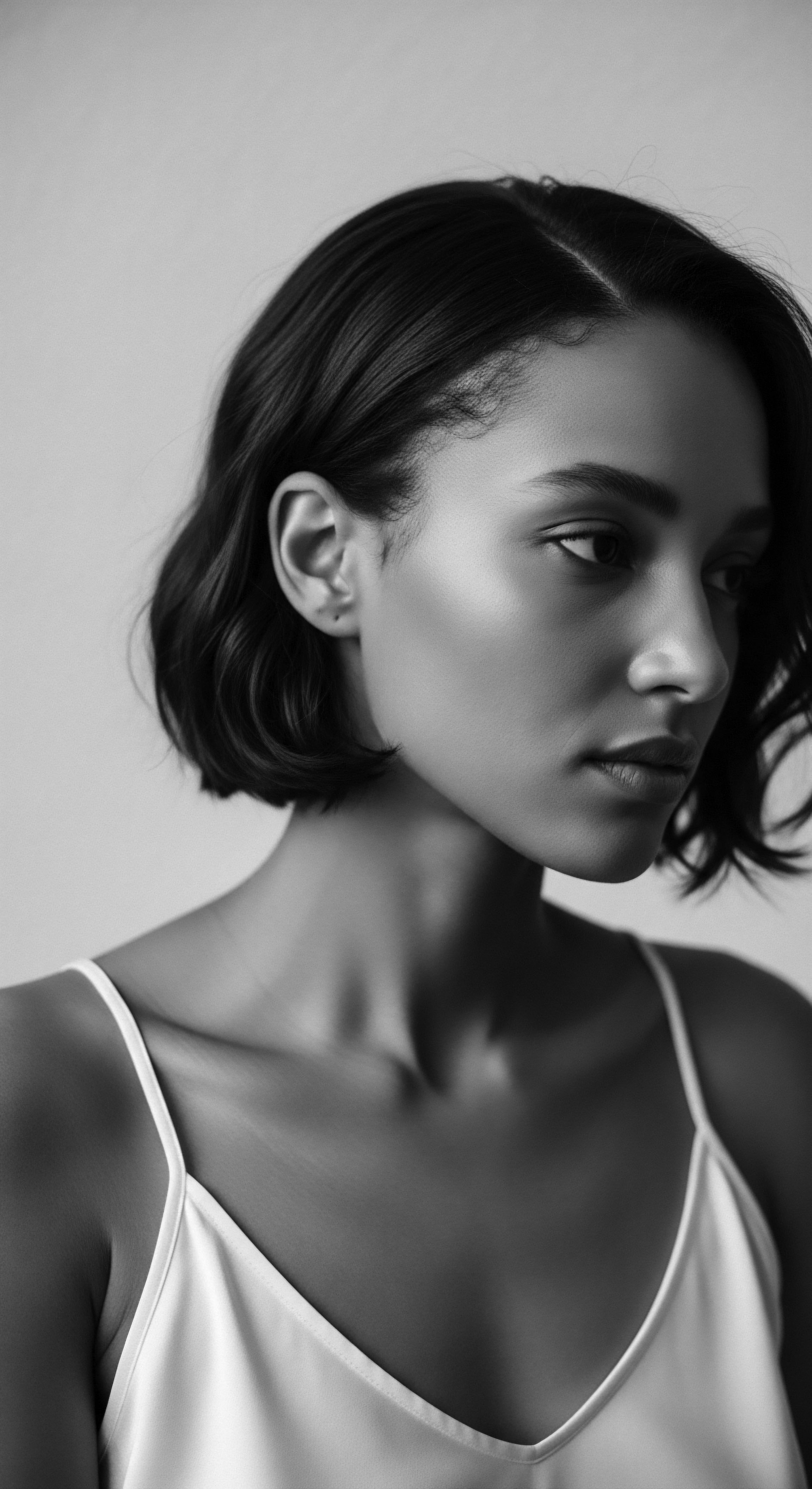
Lipid Architecture of the Hair Fiber
The hair fiber is not a uniform structure; it is a meticulously organized biological scaffold. Ceramides, along with other lipids such as 18-methyl eicosanoic acid (18-MEA) and cholesterol, contribute to the intercellular lipid matrix within the cuticle. 18-MEA, in particular, is a unique fatty acid covalently bound to the outermost cuticle surface, providing a significant part of the hair’s hydrophobicity. Ceramides then act to cement these cuticle layers together, forming a robust protective envelope.
When hair undergoes processes such as chemical treatments (coloring, relaxing), excessive heat styling, or even vigorous washing, these natural lipids, including ceramides, can be depleted. This loss compromises the hair’s barrier function, making it more permeable and vulnerable. The hair might feel rough, become prone to tangling, and lose its natural sheen. The replenishment of these lipids, whether through natural means or modern hair care products, becomes a deliberate act of restoration, aiming to reinstate the hair’s inherent resilience.
The variations in hair lipid composition across different ethnic hair types are a subject of ongoing study. While African hair, for example, may have a higher overall lipid content compared to European or Asian hair, its unique structure can also contribute to perceived dryness. This suggests that the distribution and specific types of lipids, including ceramides, play a complex role in the health and appearance of textured hair. Understanding these nuances allows for a more attuned approach to care, one that honors the inherent qualities of each hair type.
- Ceramide Synthesis ❉ Ceramides are natural components, formed within the hair follicle as the strand grows.
- Barrier Reinforcement ❉ They bolster the hair’s natural lipid barrier, guarding against external damage.
- Moisture Regulation ❉ Ceramides regulate water movement into and out of the hair, preserving hydration.
- Texture and Suppleness ❉ A healthy ceramide presence contributes to a smoother cuticle, resulting in softer hair.

Academic
The academic elucidation of Ceramide Hair positions it as a sophisticated concept, denoting the indispensable structural and functional contribution of ceramides—a distinct class of sphingolipids—to the integumentary appendage known as the hair fiber. This designation transcends a mere description of chemical presence, instead encompassing the intricate biophysical mechanisms by which these lipids maintain the hair’s mechanical integrity, modulate its hydration dynamics, and confer resistance against deleterious environmental and chemical stressors. Ceramides are pivotal constituents of the intercellular lipid matrix, particularly within the cuticle, the outermost protective layer of the hair shaft.
They are not merely fillers; they serve as molecular anchors, orchestrating the cohesion of keratinized cells and regulating the permeability of the hair fiber. This nuanced interpretation is particularly salient when considering the distinct morphological and biophysical characteristics of textured hair, where the preservation of lipid order and quantity holds heightened implications for overall hair health and resilience.
From an academic vantage, the meaning of Ceramide Hair is deeply intertwined with the concept of the hair’s lipid barrier function, a critical aspect of its biological performance. This barrier, composed of a complex mixture of endogenous lipids, including ceramides, cholesterol, and fatty acids like 18-methyl eicosanoic acid (18-MEA), provides a hydrophobic shield. This shield minimizes transepidermal water loss (TEWL) from the hair shaft and acts as a selective gatekeeper against the ingress of exogenous substances.
Scientific inquiry reveals that the unique helical configuration and inherent porosity of textured hair, often observed in individuals of African and mixed-race descent, render this lipid barrier particularly susceptible to disruption. Consequently, the structural integrity provided by ceramides becomes an even more critical determinant of moisture retention and mechanical fortitude in these hair types.
Ceramide Hair represents a sophisticated understanding of how specific lipids, especially ceramides, govern the hair’s structural integrity and moisture regulation, a function critically important for the unique biophysical needs of textured hair.
The historical narrative of hair care within diasporic communities, especially those with deeply rooted African heritage, provides a compelling lens through which to comprehend the practical significance of ceramides, even in the absence of explicit scientific nomenclature. Ancestral practices, refined over millennia, consistently applied natural emollients and occlusives derived from indigenous flora. These traditions, while lacking modern biochemical assays, intuitively understood the necessity of maintaining the hair’s moisture balance and structural cohesion. The widespread use of Shea Butter (Vitellaria paradoxa), for instance, across numerous West African communities—from the Dogon of Mali to the Yoruba of Nigeria—stands as a profound testament to this inherited wisdom.
Shea butter, traditionally extracted from the nuts of the shea tree, is rich in a complex array of fatty acids, including stearic and oleic acids, alongside unsaponifiable components such as triterpene alcohols and sterols. Akihisa et al. (1998) detailed the significant presence of these fatty acids and triterpene alcohols in shea butter, highlighting its rich lipid profile. These components, while not ceramides themselves, act as precursors or mimic their protective qualities by forming a robust occlusive layer on the hair shaft, thereby reducing moisture evaporation and supporting the hair’s natural lipid barrier.
The application of shea butter in ancestral rituals for hair dressing, scalp conditioning, and protective styling served to fortify the hair’s external defense, intuitively compensating for potential lipid deficiencies or mitigating environmental challenges. This historical practice, documented in ethnobotanical studies by scholars such as Lovett (2001), underscores a continuous thread of care that predates contemporary scientific discovery, yet aligns remarkably with our current understanding of ceramide function in hair health.
The inherent characteristics of textured hair, including its elliptical cross-section, tighter curl patterns, and fewer cuticle layers at the points of curvature, contribute to a higher propensity for mechanical damage and moisture loss. A systematic review on hair lipid composition by Csuka et al. (2022) highlights that lipid content varies by ethnic hair type and hair layer, underscoring the vital role of lipids in providing a protective barrier, preventing breakage, and influencing the elastic properties of hair.
While African hair may possess a higher overall lipid content, its structural morphology can lead to a perceived dryness and increased vulnerability to lipid loss during styling and environmental exposure. This observation necessitates a deeper inquiry into the qualitative aspects of hair lipids, including the specific ceramide subtypes and their spatial distribution, to fully comprehend their contribution to the unique needs of textured hair.

Biophysical Imperatives and Ancestral Resonances
The biophysical role of ceramides extends to influencing the hair’s mechanical properties. They contribute to the rigidity and elasticity of the hair fiber, affecting its ability to resist tensile stress and bending forces. When ceramides are depleted, the hair can become stiff, brittle, and more prone to fracture.
This becomes particularly critical for textured hair, which naturally experiences greater stress at the bends and coils of its structure. The traditional practice of oiling and conditioning, often a communal and ritualistic activity, served not only aesthetic purposes but also functioned as a protective measure, reducing friction and supporting the hair’s structural integrity.
The historical context of hair care for Black and mixed-race individuals is replete with adaptive strategies to preserve hair health amidst challenging circumstances, including the trauma of forced migration and enslavement. In these contexts, hair care was not merely cosmetic; it was an act of cultural preservation, resistance, and self-affirmation. The deliberate concealment of rice seeds within intricate braided hairstyles by enslaved West African women, as a means of ensuring survival and cultural continuity in the Americas, speaks to the profound functional and symbolic role of hair. This historical example, while not directly about ceramides, powerfully illustrates how hair, its care, and its structural resilience were interwoven with survival and the transmission of ancestral knowledge, indirectly supporting the hair’s physical well-being through protective styling.
Contemporary scientific research on ceramides in hair products often focuses on biomimetic ceramides or ceramide-like molecules that can integrate into the hair’s lipid matrix. These exogenous applications aim to replenish lost lipids, smooth the cuticle, and restore the hair’s barrier function. The efficacy of these modern interventions finds an echo in the enduring wisdom of ancestral remedies, which, through their rich lipid profiles and gentle application methods, achieved similar outcomes of hair fortification and moisture preservation. This convergence of ancient practice and modern science underscores the timeless significance of nurturing the hair’s fundamental components.
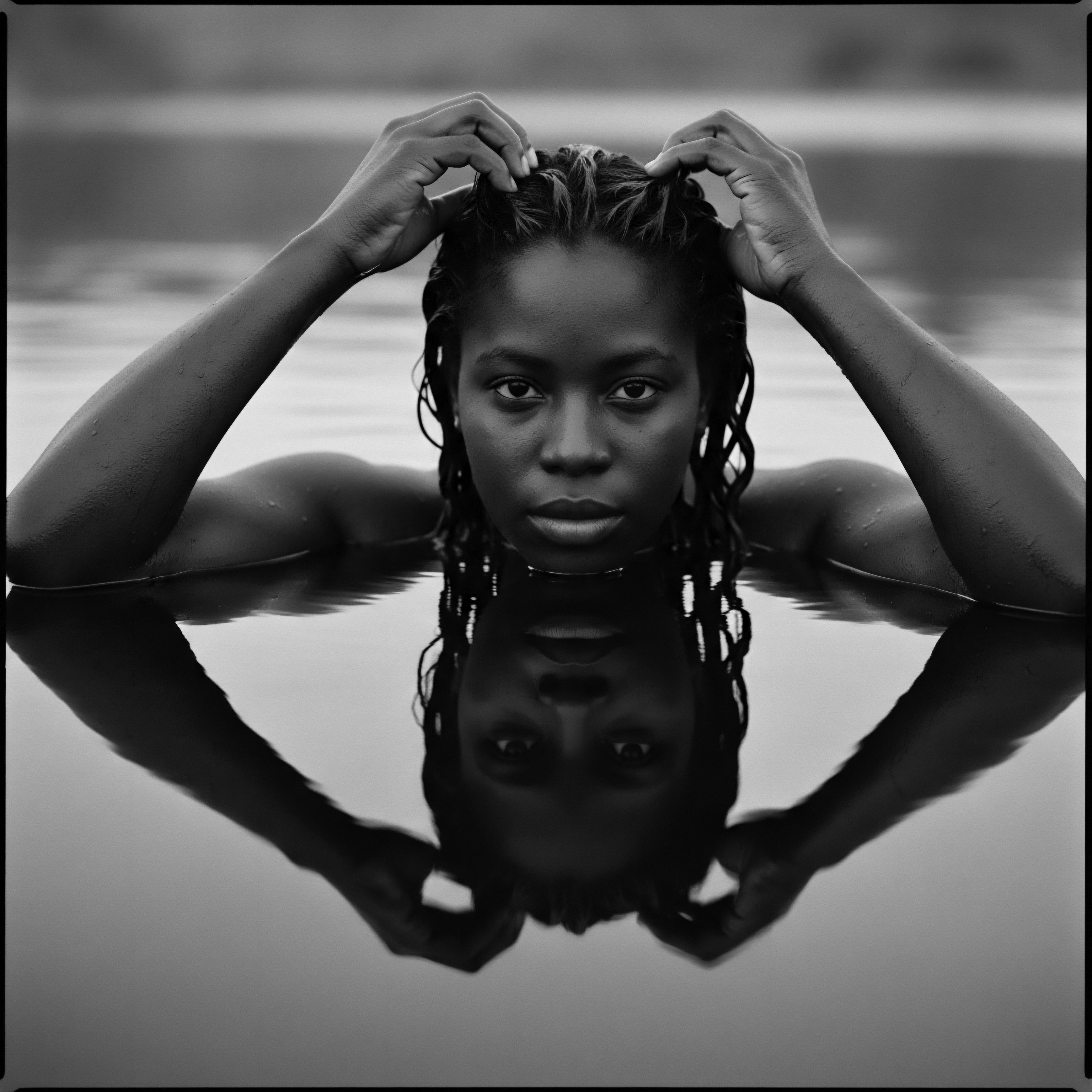
Ceramide Loss and Restoration
Various factors contribute to the depletion of ceramides from the hair shaft. Chemical processes such as permanent waving, bleaching, and coloring are known to significantly reduce the hair’s lipid content, including ceramides, by disrupting the cuticle and intercellular cement. Mechanical stress from aggressive brushing, tight styling, and heat exposure also contributes to lipid loss. The cumulative effect of these factors can lead to a cycle of dryness, breakage, and dullness, especially pronounced in textured hair types already prone to these issues.
Restoration strategies often involve topical application of ceramide-rich products or ingredients that support the hair’s natural lipid synthesis. Ingredients like shea butter, coconut oil, and various plant-derived fatty acids have been traditionally used and are now scientifically recognized for their emollient and occlusive properties, which help to seal the cuticle and prevent moisture loss. This approach not only addresses the immediate symptoms of damaged hair but also aligns with the ancestral ethos of nourishing and protecting the hair with natural, lipid-rich elements.
The future of Ceramide Hair understanding lies in a holistic approach that integrates advanced scientific insights with the enduring wisdom of textured hair heritage. This involves ❉
- Personalized Lipid Profiles ❉ Investigating individual variations in ceramide types and concentrations across diverse textured hair populations to tailor care regimens.
- Ethnobotanical Validation ❉ Further scientific exploration of traditional plant-based remedies to validate their mechanisms of action in supporting hair lipid health.
- Sustainable Sourcing ❉ Promoting ethical and sustainable sourcing of natural ingredients that provide ceramide precursors or biomimetic compounds, honoring both ancestral lands and practices.
Such an integrated perspective acknowledges that the pursuit of healthy Ceramide Hair is not a new endeavor but a continuous dialogue between scientific discovery and the profound, inherited knowledge of those who have long understood the soul of a strand.
| Traditional Ingredient Shea Butter (Vitellaria paradoxa) |
| Ancestral Use Used for centuries as a moisturizer, protectant, and sealant for hair and scalp across West Africa. |
| Modern Scientific Link to Ceramide Support Rich in fatty acids (stearic, oleic) and unsaponifiable lipids that form an occlusive barrier, reducing moisture loss and supporting the hair's natural lipid matrix, akin to ceramide function. |
| Traditional Ingredient Coconut Oil (Cocos nucifera) |
| Ancestral Use Applied for hair conditioning, strength, and shine in various Afro-diasporic and Indigenous communities. |
| Modern Scientific Link to Ceramide Support Composed primarily of lauric acid, which has a small molecular structure allowing it to penetrate the hair shaft, reducing protein loss and supporting the hair's internal lipid structure. |
| Traditional Ingredient Palm Oil (Elaeis guineensis) |
| Ancestral Use Used for hair and skin nourishment in parts of West and Central Africa. |
| Modern Scientific Link to Ceramide Support Contains saturated and unsaturated fatty acids, providing emollient properties that help to seal the cuticle and retain moisture, indirectly aiding the hair's lipid barrier. |
| Traditional Ingredient These ancestral practices, while not explicitly naming ceramides, intuitively provided the hair with lipids that supported its structural integrity and moisture balance. |
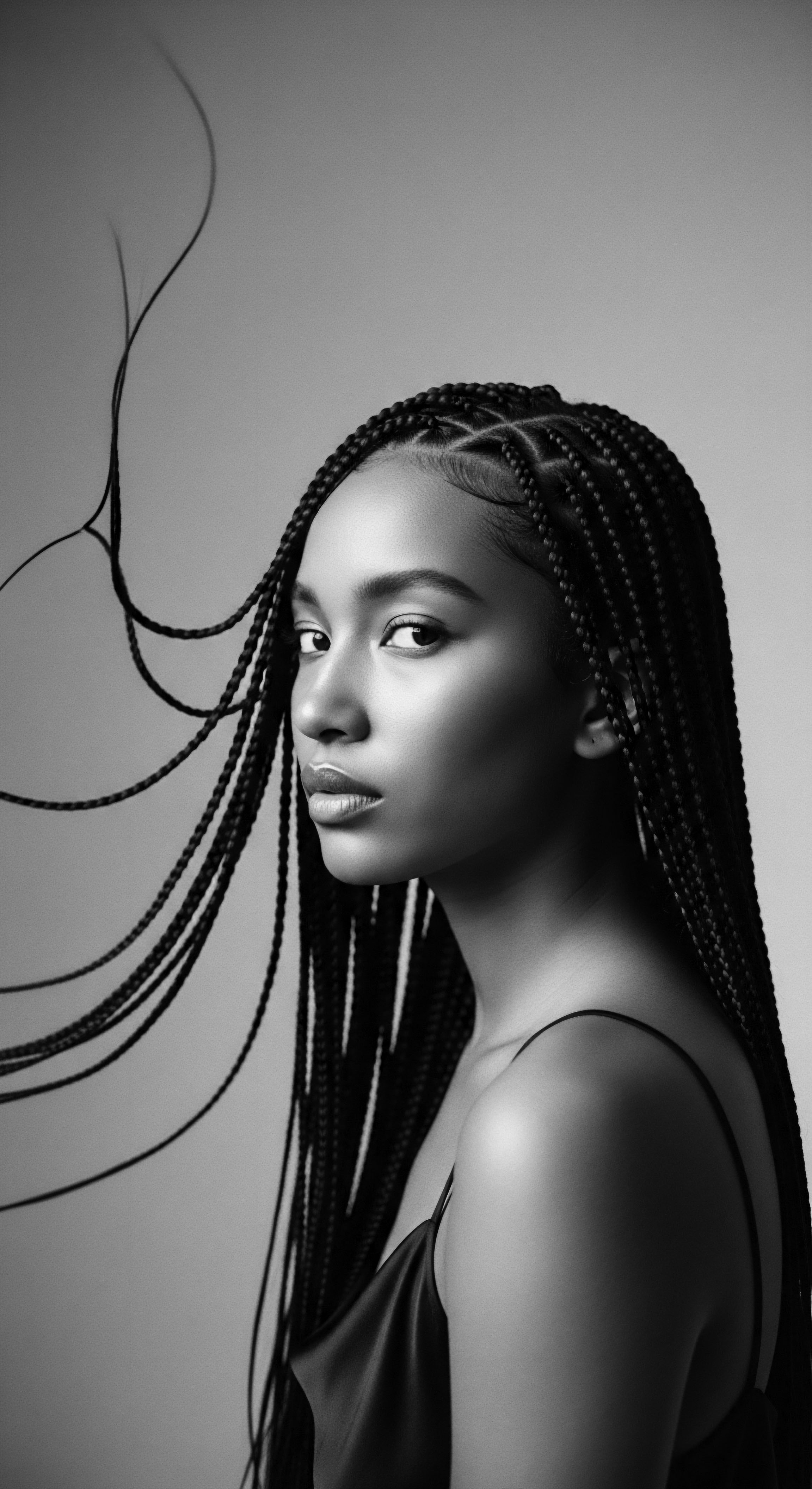
Reflection on the Heritage of Ceramide Hair
The journey through the concept of Ceramide Hair reveals a profound connection between the elemental biology of the hair strand and the rich, enduring heritage of textured hair care. This is not merely a scientific classification; it is a recognition of the innate resilience and delicate balance within each coil, curl, and wave. From the “Echoes from the Source,” we hear the whisper of ancient practices, where communities intuitively understood the need to nourish and protect hair, even without the language of lipid chemistry. These practices, rooted in ancestral wisdom, formed the earliest chapters of our living library, teaching us how to honor the hair’s inherent protective mechanisms.
The “Tender Thread” of care, woven through generations, speaks to the communal rituals of styling, oiling, and adorning hair, which were acts of love, identity, and cultural preservation. These were not just aesthetic endeavors; they were profound engagements with the hair’s physical and spiritual well-being, directly supporting its lipid integrity and moisture retention. The wisdom of applying rich plant butters and oils, passed down from elder to child, ensured that the hair’s natural barrier, now understood through the lens of ceramides, remained robust against the elements and the stresses of daily existence. This intergenerational transmission of knowledge formed the bedrock of textured hair care, a testament to human ingenuity and deep reverence for the body.
As we look towards “The Unbound Helix,” the concept of Ceramide Hair continues to voice identity and shape futures. It invites us to bridge the wisdom of our past with the discoveries of our present, recognizing that the science of hair only deepens our appreciation for what our ancestors knew in their hearts and hands. Understanding ceramides allows us to articulate the ‘why’ behind practices that have sustained textured hair for centuries, affirming the validity and efficacy of inherited traditions.
This convergence empowers individuals to approach their hair care with a renewed sense of purpose, connecting their personal hair journey to a vast, vibrant legacy of resilience and beauty. The soul of a strand, therefore, is not just about its biological composition; it is about the stories it carries, the history it embodies, and the future it continues to shape, always returning to the deep well of heritage that nourishes it.
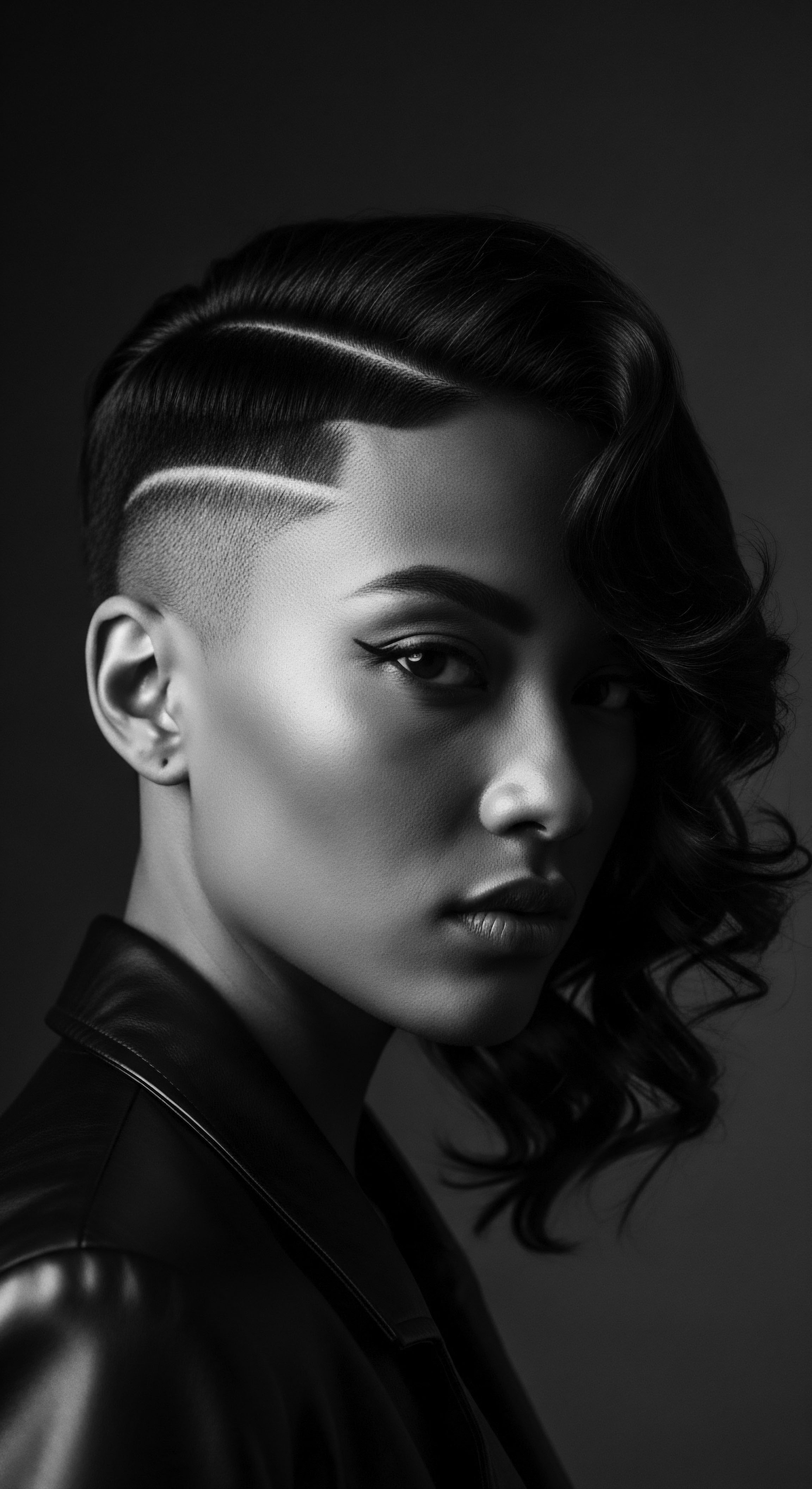
References
- Akihisa, T. Kojima, N. Katoh, N. & Kikuchi, T. (1998). Triterpene alcohols and fatty acids from shea butter. Journal of the American Oil Chemists’ Society, 75(11), 1645-1650.
- Csuka, D. A. Csuka, E. A. Juhász, M. L. W. Sharma, A. N. & Mirmirani, P. (2022). A systematic review on the lipid composition of human hair. International Journal of Dermatology, 61(3), 404-415.
- Lovett, J. C. (2001). The ethnobotany of the shea butter tree, Vitellaria paradoxa, in West Africa. Economic Botany, 55(2), 234-245.
- Van Der Walt, A. L. (2006). The chemical composition of human hair ❉ a review. Journal of Cosmetic Science, 57(6), 445-469.
- Van Der Walt, A. L. Strydom, H. J. & Botha, J. C. (2004). Differences in the composition of lipids extracted from human hair. Journal of Cosmetic Science, 55(4), 381-392.
